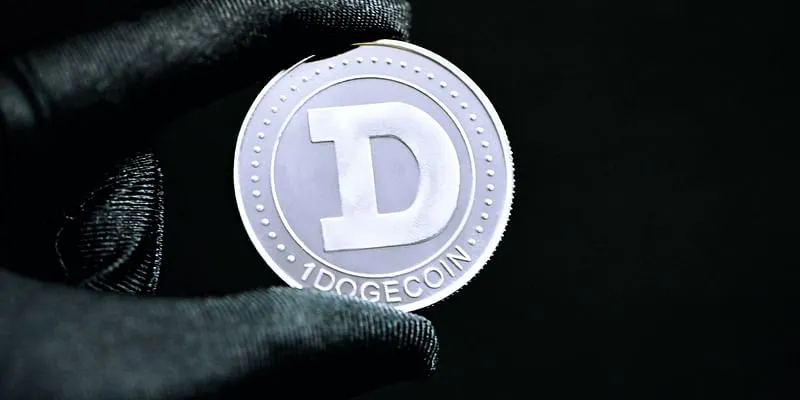What are Dogecoin (DOGE) and Shiba Inu (SHIB)? Here’s all you need to know about these crypto memecoins
With DOGE and SHIB surging in popularity and breaking into the list of top 10 cryptocurrencies by market cap, people around the globe were left wondering what they are all about. Read on to find out more about the two most popular memecoins in crypto.
Beyond the top names such as Bitcoin and Ethereum, the cryptocurrency world has come up with peculiar and interesting coins such as Dogecoin, Shiba Inu, Tiger King, Mona Coin and more.
In fact, many of these tokens are referred to as ‘memecoins’ - cryptocurrency tokens associated with an internet joke or comical theme.
Dogecoin (DOGE), for example, was named after a Shiba Inu dog that became popular on the Internet. Shiba Inu (SHIB), an alternative to Dogecoin, is also named after the Japanese breed, although it does not reference any particular dog on the Internet.
To the surprise of traders everywhere, these two coins have surged in value and trading volumes in recent months, and have broken into the list of top 10 cryptocurrencies by market capitalisation.
DOGE was extensively tweeted about by the likes of Elon Musk and Mark Cuban, who believed it has the potential to act as a form of payment. As a result, its value soared to an all-time high (ATH) of $0.73 in May 2021.
SHIB, which has been riding DOGE’s coattails, reached an ATH of $0.000086 in October 2021.

Tesla CEO Elon Musk, the self-proclaimed 'Dogefather'
With these memecoins surging in popularity, traders around the world were left wondering what Dogecoin and Shiba Inu are all about. Here’s more about the two most popular memecoins in crypto:
Dogecoin (DOGE)
In 2013, software engineers Billy Markus and Jackson Palmer decided to launch a payments system as a joke. Their intention was to make fun of the high volatility and wild speculation on crypto.
At the time, the ‘doge’ meme was gaining popularity online, and so Billy and Jackson adopted the meme as the face of their satirical payments system, and launched Dogecoin in 2013.
DOGE is an open-source crypto which relies on proof-of-work mining, and is a stem of a fork of the Litecoin codebase.
According to Billy, a more light-hearted crypto token might have a better chance to attract mainstream users to crypto than ‘serious’ tokens like Bitcoin.
Upon launch, various DOGE communities began springing up online, and they earned reputations for tipping content creators and making charitable contributions.
Over time, the popularity of DOGE soared, with Elon Musk’s tweeting that Dogecoin “might be” his favourite cryptocurrency sending the token’s market cap and value to new highs. Musk also proclaimed himself as the ‘Dogefather’.
In 2021, DOGE’s market cap reached well over $35 billion.
At present, users can acquire DOGE through various crypto exchanges, or mine it themselves, and choose to transact with it wherever legal and accepted. Users can also hold it long-term in their electronic or physical crypto wallets.
The circulating supply of DOGE is currently around 132 billion tokens.

Shiba Inu (SHIB)
In 2020, an anonymous individual or group named ‘Ryoshi’ created Shiba Inu on the Ethereum blockchain as an experiment in fully-decentralised community building. Here, the native token SHIB is an incentive for using ShibaSwap - a decentralised exchange in the Shiba Inu ecosystem..
According to the founder(s), Shiba Inu was developed to run an experiment “in decentralised spontaneous community building”, and that the power of collective decentralisation could build a stronger product or community than any centralised entity or enterprise.
Starting with a supply of one quadrillion tokens, SHIB is an Ethereum-based ERC-20 token, and does not have its own blockchain. Ryoshi stated the SHIB ecosystem is built on Ethereum since it is already secure, and allows Shiba Inu to stay decentralised.
Ryoshi also locked 50 percent of SHIB in the UniSwap ecosystem, and sent the rest to Ethereum cofounder Vitalik Buterin for safekeeping. Vitalik donated 50 trillion SHIB (then worth over $1 billion) to a COVID-19 relief fund in India, before burning (permanently removing) 40 percent of SHIB’s total supply.
The Shiba Inu ecosystem also contains two other tokens: LEASH and BONE.
LEASH was intended to be a rebase token linked with Dogecoin’s price, but it was later decided it will continue as an ERC-20 token. Its total supply is 107,646 tokens.
BONE is designed to act as a governance token for Shiba Inu’s community to vote on proposals. Its total supply is 250 million tokens.
On ShibaSwap, these tokens can be used to Dig (provide liquidity), Bury (stake tokens), Fetch (exchange tokens) and more.
Similar to Dogecoin, SHIB can be purchased on crypto exchanges, but as mentioned above, it has more use cases in the Shiba Inu ecosystem.

Memecoins: a risky investment option?
When DOGE and SHIB took the crypto world by storm, they helped introduce mainstream audiences to blockchain and crypto in a humorous and lighthearted way.
These memecoins became a popular investment option for crypto traders who saw DOGE and SHIB as tokens that rejected conventional protocols of transfer of value.
While possible to make substantial returns on memecoins, they are also seen as highly risky and speculative investments.
For traders, it is tremendously difficult to know the right time to invest in memecoins like DOGE and SHIB.
There have been numerous instances where users have invested in memecoins near their all-time highs, only for their prices to drastically fall in a short period of time. Some traders also consider buying memecoins akin to gambling.
Edited by Teja Lele











